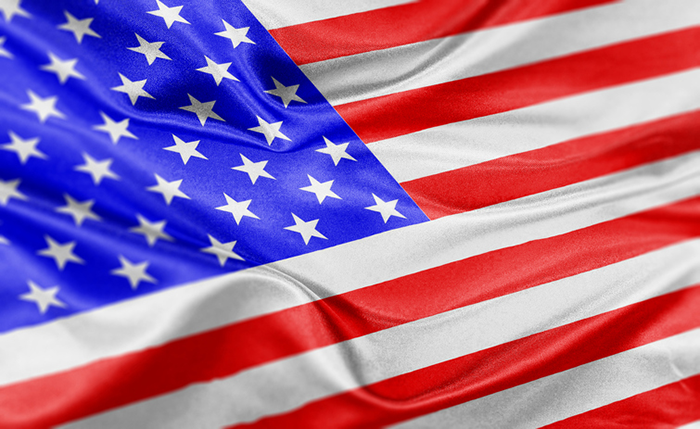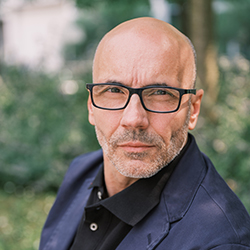New York Correspondences
1 April 2025
United States: Heading Towards Russian-Style Elections in 2026?

Let’s Call a Spade a Spade: The United States is Becoming an Illiberal Democracy Led by an Authoritarian President
While promoting my book L’Amérique éclatée, published in France this past January, I predicted that within two years, the United States would resemble Viktor Orbán’s Hungary more than Kennedy’s or Obama’s America. I must admit I was wrong: it only took two months.
Since his re-election in November 2024, Donald Trump has accelerated his authoritarian shift. Upon returning to the White House, he issued a flurry of controversial executive orders, many aligned with the principles of “Project 2025” — a blueprint from the ultra-conservative Heritage Foundation that aims to consolidate power in the hands of the president, to the detriment of traditional checks and balances, particularly Congress, which, at best, remains passive and, more often than not, openly supports this authoritarian recentralisation.
One of the most striking measures came on 20 March 2025, when Trump signed an executive order to shut down the Department of Education. Linda McMahon, appointed to lead the department, immediately cut nearly 100,000 jobs — around half the workforce. This move, cheered by evangelical groups and far-right supporters, seeks to dismantle public education in favour of a system that privileges private and traditionalist institutions — where, all too often, creationism is taught over evolution.
At the same time, Trump has intensified his attacks on the judiciary. From threats against law firms involved in litigation against him, to efforts to discredit judges and apply public pressure, the strategy is clear. He notably called for the impeachment of federal judge James Boasberg after the latter blocked a controversial immigration-related executive order — actions that, taken together, threaten judicial independence and fuel institutional tensions.
Critical media outlets have not been spared. Journalists have been barred from White House press areas, and legal action has been taken against several media organisations deemed overly critical. The aim is not only to silence the press but to suppress all dissenting voices — including from scientific and artistic communities — by controlling the public narrative in a manner reminiscent of authoritarian regimes that crush opposition.
Many are surprised to see such a marked departure from Trump’s previous term. They forget that Donald Trump is no longer playing a role: he has become what he once only symbolised. He now embodies a fully formed ideological project. More importantly, he is surrounded by a structured ultraright wing, including figures like Susie Wiles and JD Vance — seasoned intellectuals and architects of an American authoritarian nationalism. These are not improvisers; they have a plan. And they are executing it, line by line.
In the face of these shifts, the traditional counterbalances are struggling to respond. Congress, with its Republican majority, largely backs the president, while the Supreme Court, now firmly aligned with the conservative cause, has yet to act as an institutional safeguard. Popular protests, unfortunately few and far between — and rarely supported by Democrats or progressive elites, who appear paralysed and unequal to the moment — are increasingly repressed, contributing to a climate of fear and intimidation.
The current trajectory dangerously echoes the path taken by Hungary under Viktor Orbán, where democratic institutions have been gradually hollowed out in favour of an all-powerful executive. The United States, once held up as a model of liberal democracy, is now following a similar route, jeopardising the very foundations of its political system.
What is perhaps most alarming is that, unlike Orbán, Donald Trump is not subject to any regional oversight — no institutional “watchdog” akin to the European Union, however limited its effectiveness may be. There is no one to sound the alarm or compel him to adhere to democratic norms. He is the sole master on board in a country where the culture of personal power has long been entrenched. And this — more than his speeches or decrees — is the true danger.
He has even crossed a line that Orbán himself did not. In 2021, the Hungarian prime minister transferred control of several public universities to foundations run by political allies, establishing lasting political oversight of higher education. But he never went so far as to dictate the content of academic programmes. Donald Trump has done just that: he now tells American universities, both public and private, which subjects they are allowed to teach. This is unprecedented in a Western democracy since the first half of the 20th century. The consequences were immediate: under direct pressure from the White House and the threat of severe financial penalties, most university presidents capitulated without resistance. Like so many other pillars of American democracy, academic autonomy is now crumbling.
In Washington, anxiety is no longer confined to opposition circles or liberal columnists: it has spread to the heart of institutions, federal agencies, and former insiders. In think tanks and among some senior officials still in post, a troubling question is being asked with increasing urgency: will the 2026 midterm elections be held according to democratic rules?
The logic is simple: if such an authoritarian shift can take place in just a few weeks, why assume this administration would calmly risk losing power in nineteen months’ time? Many now fear the next elections could resemble those organised under Vladimir Putin more than the democratic process the United States has upheld for nearly 250 years.
As for those who scoff or shrug off these warnings with a smug “it can’t happen here,” they are part of that class of complacent minds always one step behind history. The same people who, in 2016, insisted Donald Trump would never be elected. The same who, after the Capitol riot in 2021, claimed he would end up in prison. The same who, until recently, believed Americans would never vote for him again. And, lastly, those who, before 20 January, assured us that Trump had “learned his lesson” and would return as a reasonable statesman.
Once again, we must face the facts if we are to stand any chance of stopping what’s unfolding. A recent American poll showed that nearly 50% of citizens would be willing to give up certain rights in exchange for a stronger federal government, in the name of national sovereignty and against so-called threats — threats that Trump repeatedly exaggerates in his speeches.
It would be deeply ironic if, in 2026, to mark the 250th anniversary of their independence, the United States were to hold elections marked by political pressure, thinly veiled threats, strict media control, electoral engineering to disenfranchise specific groups — and, ultimately, results more or less predetermined. The stage is already set: on 25 March, Donald Trump signed a decree significantly restricting postal voting, under the pretext of “securing” the election.
Postscript: And I have not even addressed Donald Trump’s recent remarks suggesting he might seek a third term. Once again, those who hide behind the argument that “it’s forbidden by the Constitution” need to open their eyes. Until 1951, nothing in U.S. law prevented a president from running as many times as they wished. The 22nd Amendment, ratified that year, introduced the two-term limit. But like any amendment, it can be repealed. The 1973 Roe v. Wade ruling, which guaranteed federal abortion rights, wasn’t a constitutional amendment either — yet it stood for nearly 50 years and was considered untouchable, until the Supreme Court abruptly overturned it in 2022.
Romuald Sciora is Director of the Political and Geostrategic Observatory of the United States at IRIS, where he is an associate researcher. A Franco-American essayist and political analyst, he is the author of numerous books, articles and documentaries, and frequently appears in international media to comment on current affairs. He lives in New York.

